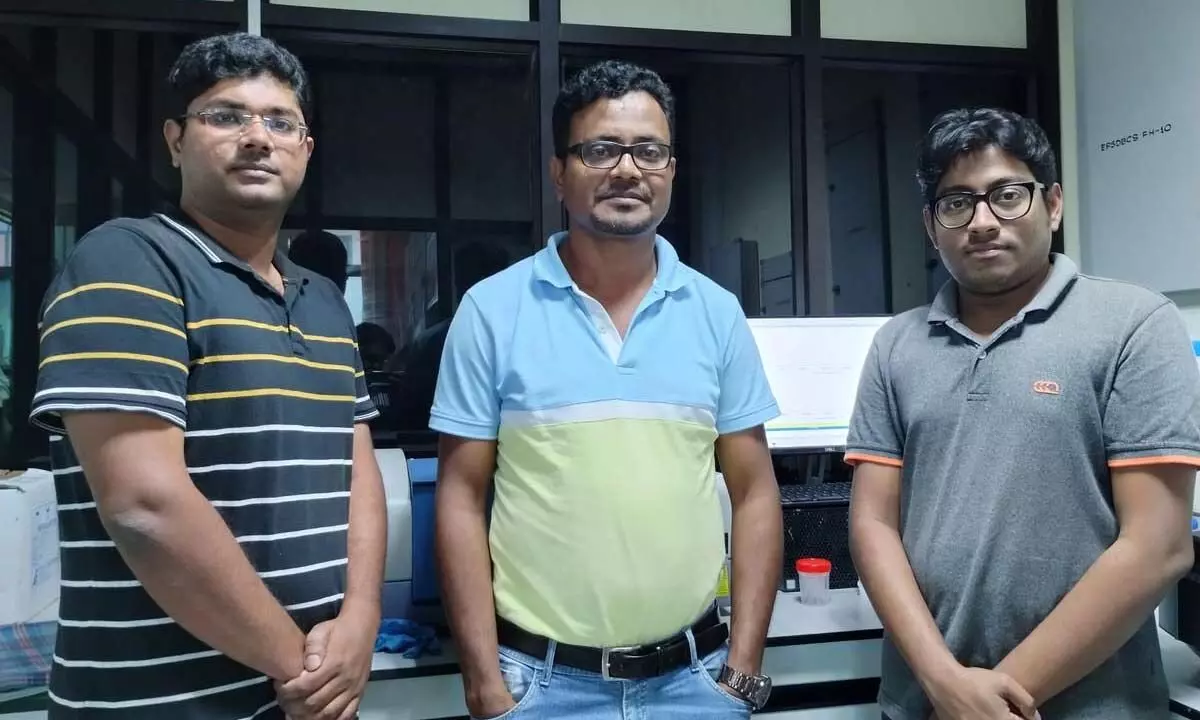Artificial photosynthetic systems for solar energy capture developed

Artificial photosynthetic systems for solar energy capture developed
Researchers from Indian Institute of Science Education and Research (IISER) here and IIT Indore have studied and developed a new artificial light-harvesting system that can efficiently capture light for power conversion by mimicking photosynthesis, the process by which plants absorb sunlight and produce sugar.
Researchers from Indian Institute of Science Education and Research (IISER) here and IIT Indore have studied and developed a new artificial light-harvesting system that can efficiently capture light for power conversion by mimicking photosynthesis, the process by which plants absorb sunlight and produce sugar.
The results of this study have been published in the journal of the prestigious Royal Chemical Society - Chemical Science.
The paper has been co-authored by IISER researchers -- Dr. Sukhendu Mandal, Associate Professor, Department of Chemistry along with his research scholars and IIT Indore researchers -- Prof. Biswarup Pathak, Department of Chemistry.
Explaining the structure of their atomically precise molecule, Mandal said the molecule they developed is a 16 silver atoms-ligand-cyclodextrin assembly that acts as a donor and I-carotene as an acceptor. This is the first time we have utilized atom-precise nanocluster in such an application.
"The opposite charges on the surfaces and the matched electronic energy distribution result in a 93 per cent energy transfer efficiency with a great antenna effect from the UV-to-visible region of the light spectrum," added Mandal.
The researchers also showed that this harvested energy could generate current with much-enhanced yields compared to the individual components.
Incidentally this development comes at a time when all over the world, scientists are trying to replicate the light-harvesting step of photosynthesis in engineered systems for use in solar cells or artificial leaves.
The light-harvesting cores in plants and other photosynthetic bacteria are chromophores, molecules that absorb visible light and pass it on to other components that use the energy for various chemical reactions.
There have been many attempts at replicating the molecular and atomic structure of the light-harvesting mechanism in the lab. Polymeric structures, detergent-type molecules, vesicles, gels, and other bioinspired structures have been used to mimic photosynthesis.
The most common problem faced by such molecules is that the light is quenched due to aggregation or bunching up of the molecules together. This leads to poor light capture and conversion efficiencies.
The IISER TVM and IIT Indore scientists have found a way to overcome the quenching problems of artificial light absorbers and transmitters.
The research team now believes that this fundamental investigation into highly-efficient energy transfer systems will provide the basis for designing new light-harvesting materials that can enhance the efficiency of solar cells and reduce energy loss.
"This is important given that India aims to achieve net zero carbon emissions by 2070 and to meet 50 per cent of its electricity needs from renewable sources such as solar power by 2030," said Mandal. The researchers believe that although there is a long way to go to ensure that these types of materials enter mainstream solar energy generation on a mass scale, such research help in bringing efficiency enhancement one step closer to reality.














